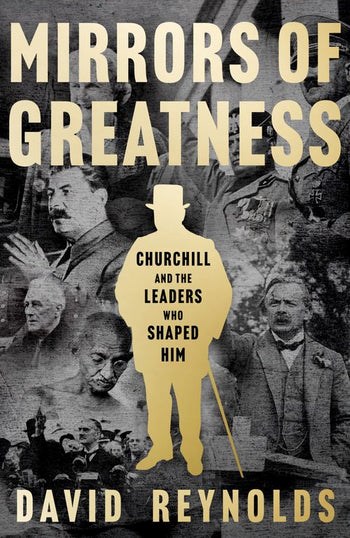If you’re familiar with a wide range of the voluminous literature on Winston Churchill, historian David Reynolds’ Mirrors of Greatness: Churchill and the Leaders Who Shaped Him won’t tell you anything new. But those of us less steeped in the subject will find the Reynolds approach interesting.
The book is organized into 12 very readable chapters, each devoted to the interactions between Churchill and a specific historical contemporary. And one of the relationships explored is that between Churchill and his prime ministerial predecessor, Neville Chamberlain, which Reynolds characterizes as “rooted in the contest between two great political dynasties.”
The Churchills were long established aristocrats. John Churchill, Duke of Marlborough, had won famous victories over the French at Blenheim (1704) and Ramillies (1706), and as a consequence, he’s considered one of England’s greatest generals. The Chamberlain family’s rise was much more recent.
Joseph Chamberlain, the family patriarch, made his money as a screw manufacturer before launching a political career in the 1870s. Known as Radical Joe, he started in local Birmingham politics, became a vigorously reforming mayor, and then spread his wings to the national scene.
Lord Randolph Churchill was Chamberlain’s equally ambitious political contemporary, and both men fancied themselves as prime minister. But neither made it to the top spot. That distinction was reserved for the next generation.
Chamberlain had two sons – half-brothers – who followed him into politics. The elder son, Austen, held several cabinet positions over the years. one of which – his stint as Foreign Secretary – earned him the 1925 Nobel Peace Prize. But it was the younger son, Neville, who became Winston Churchill’s rival.
Serving together in Stanley Baldwin’s cabinet after the 1924 Conservative election landslide, they had an initially fruitful, albeit uneasy, relationship. Churchill was Chancellor of the Exchequer (finance minister in Canadian terms), Chamberlain was Minister of Health, and they were both gung-ho about the need for social reform. Housing, health insurance and pensions were particular passions.
So Chamberlain proposed the legislation and Churchill found the money via such stratagems as curbing naval expenditure and increasing inheritance taxes. Chamberlain was appreciative of the support: “We were pledged to something of the kind, but I don’t think we should have done it this year if he had not made it part of his Budget scheme.”
Their personalities, however, were chalk and cheese, and Chamberlain could never be comfortable with Churchill. Whereas Chamberlain’s approach stressed attention to detail, Churchill instinctively gravitated towards the “big idea.”
Irritated, Chamberlain privately complained about how Churchill “seems to want to draw me into some new mad idea which is at present simmering in that volatile and turbulent brain of his.” By 1928, his exasperation had hardened to the point of describing Churchill as “a wayward child who compels admiration but who wears out his guardians with the constant strain he puts upon them.”
And he wasn’t the only Conservative colleague who felt this way. Baldwin humorously likened Churchill to someone who had been gifted with so many attributes that a fairy decided to balance the scales by denying him “judgement and wisdom.”
There was also a big difference in style. Where Churchill’s showmanship often entertained those on the opposition benches, Chamberlain alienated them.
What Reynolds describes as Chamberlain’s “cold clarity and mastery of detail” could be expressed as scathing sarcasm when he was challenged. In truth, he had no respect for the intellectual calibre of most Labour MPs, and the resulting resentment later cost him.
After the Conservatives lost power in 1929, both Chamberlain and Churchill were out of office. But not for long in Chamberlain’s case.
Following the 1931 election, he was back as Chancellor of the Exchequer and subsequently succeeded Baldwin as Prime Minister in 1937. Churchill, in contrast, spent the decade in the wilderness, looking for a way back to cabinet and never abandoning his ultimate ambition for the top job.
But neither Baldwin nor Chamberlain wanted him – he’d be too much trouble – and this attitude was further cemented by his vigorously expressed policy disagreements on India, the abdication crisis, and what to do about the rise of Nazi Germany. Baldwin, however, privately observed that Churchill would be the obvious choice for prime minister should there be a war.
And so it came to pass in the wartime chaos of May 1940.
Labour refused to serve in a national government led by Chamberlain; Lord Halifax – Chamberlain’s preferred successor – didn’t have the stomach for the job; and Baldwin’s observation proved prescient.
Troy Media columnist Pat Murphy casts a history buff’s eye at the goings-on in our world. Never cynical – well, perhaps a little bit.




